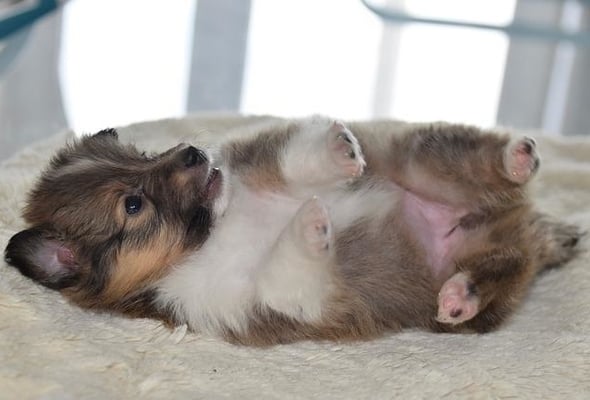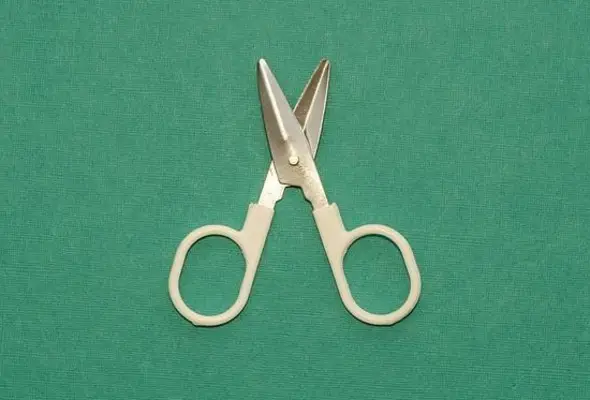It is exceedingly common for dog owners to not know that much about canine gestation, pregnancy, and birth. If you have a spayed female dog, you don’t need to worry too much about your lack of knowledge in this subject, as they can no longer have puppies.
In this article, we will be discussing some questions you may have if your dog is expected to be having puppies soon. Do puppies have umbilical cords? Not to worry! We will answer this question while also giving you some tips and tricks that you may find helpful!
Do Puppies Have Umbilical Cords?
Puppies are born with an umbilical cord just like babies are. Normally, the puppy will be born in a sac of fluid that the mother ruptures, and then she will cut the cord herself.
The mother will pierce the sac of fluid with her teeth, and then she shreds the umbilical cord with her teeth as well. The mother will know the exact place she needs to sever the cord, so don’t worry too much about that aspect.
If your dog has a litter of more than one puppy (which is likely) they will all be born in sacs of fluid with individual umbilical cords.
There are endless resources online that can help to educate you further on exactly what puppies need when they are newly born, free online articles, and videos that can show you exactly what you need to be prepared for.
Where Is The Umbilical Cord On A Puppy?
A puppy’s umbilical cord is located on its stomach close to the end of its ribcage. After the umbilical cord is severed and healed, it will leave a belly button-like scar in its place.

Puppies rely on their umbilical cords while in their mothers’ wombs for necessary nutrients throughout their gestation period. Just like human babies, puppies need the umbilical cord to survive!
If the momma successfully severs the cord, you need to make sure her puppies stay in a warm and safe area until she is finished with birth and they can be reunited. Puppies aren’t able to regulate their body temperatures until they are several weeks old, but the mother is able to take care of that after birth.
Remember that mother dogs can be protective over their pups, so it is best to leave them alone unless absolutely necessary.
Will You Have to Cut Their Umbilical Cord?
Normally the mother will sever the umbilical cord with her teeth however, if for some reason the momma doesn’t do it herself, you will have to do it.

We do not recommend severing the umbilical cord yourself unless the mother absolutely refuses to do it, as it is a natural instinct for dogs, but sometimes mothers may be too young or stressed to recognize that instinct.
You will need to have several items on hand when helping a mother deliver her puppies. We recommend having plenty of clean towels, a warm area for the pups once they are born, as well as sterilized scissors and clamps.
We do recommend researching the birthing process if your dog is pregnant, and reaching out to their primary veterinarian so they can explain to you what you need to expect and any offer recommendations they may have.
What if The Umbilical Cord Is Cut Too Short?
If the umbilical cord is severed too close to the puppy’s belly, it may not be able to stop bleeding. We recommend having a sterilized clamp on hand, as well as sterilized gauze and string to avoid any possibilities of infection.
You should also have sterilized gloves, a bulb syringe to clean out the puppy’s mouth after birth, and have a safe and warm whelping area prepared prior to birthing time. Always bring your puppies in for a follow-up with their primary veterinarian to verify they are healthy.
We strongly recommend that any time you are assisting a momma dog with her delivery, have basic first aid supplies prepared and ready to go. You can call your primary veterinarian and they may have some helpful tips or necessary items to have handy.
If you help deliver a pup that will not stop bleeding after the umbilical cord is severed, you need to seek immediate emergency veterinary care.
How Do You Treat a Puppy’s Umbilical Cord?
After the umbilical cord has been severed, it is recommended to clean the open wound with iodine.
However, we do recommend calling your primary veterinarian for their recommendation, as not all wound cleaning products that are made for humans are safe for animals. It’s better to be safe than sorry!
A puppy’s umbilical cord can become infected, so always have clean and sanitized hands before touching that area, and ensure your puppies have clean areas for rest and play.
It typically takes 1-3 days for the puppy’s umbilical cord to completely fall off, so we do recommend keeping an eye on that area until it has naturally fallen off. You can cleanse the umbilical cord stump frequently, just make sure you don’t aggravate the area.
If you notice your puppy’s stump start to ooze and turn red, that is a sign of infection! Bring your puppy in for veterinary care as soon as possible so it can be treated.
Never apply any topical ointments to an umbilical stump, unless specified by a licensed veterinarian, as most topical ointments formulated for humans are not safe for use on animals.
Conclusion
In this article, we learned about puppy umbilical cords and where they are located, proper methods of severing if needed, and concerning signs, a puppy can display that require medical care.
We highly recommend speaking with a veterinary professional before assisting your dog with birth so you can have accurate and safe information.
If you feel you still need to learn more about safe birthing methods for an expecting mother, there are countless videos by veterinary clinics that are free to view online, as well as informational articles posted on veterinary hospital blogs.

